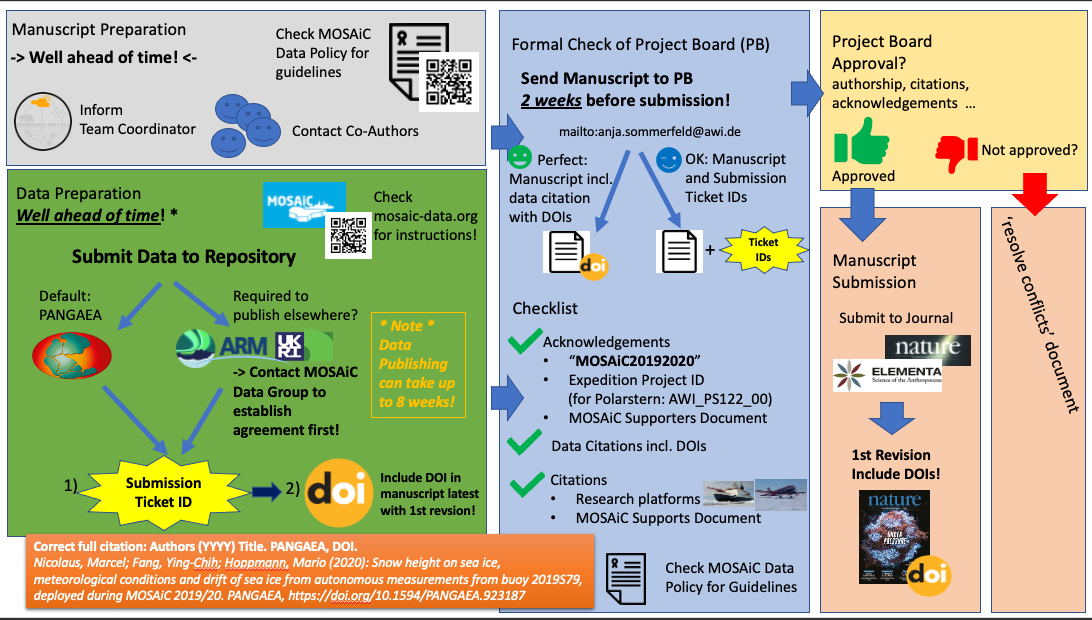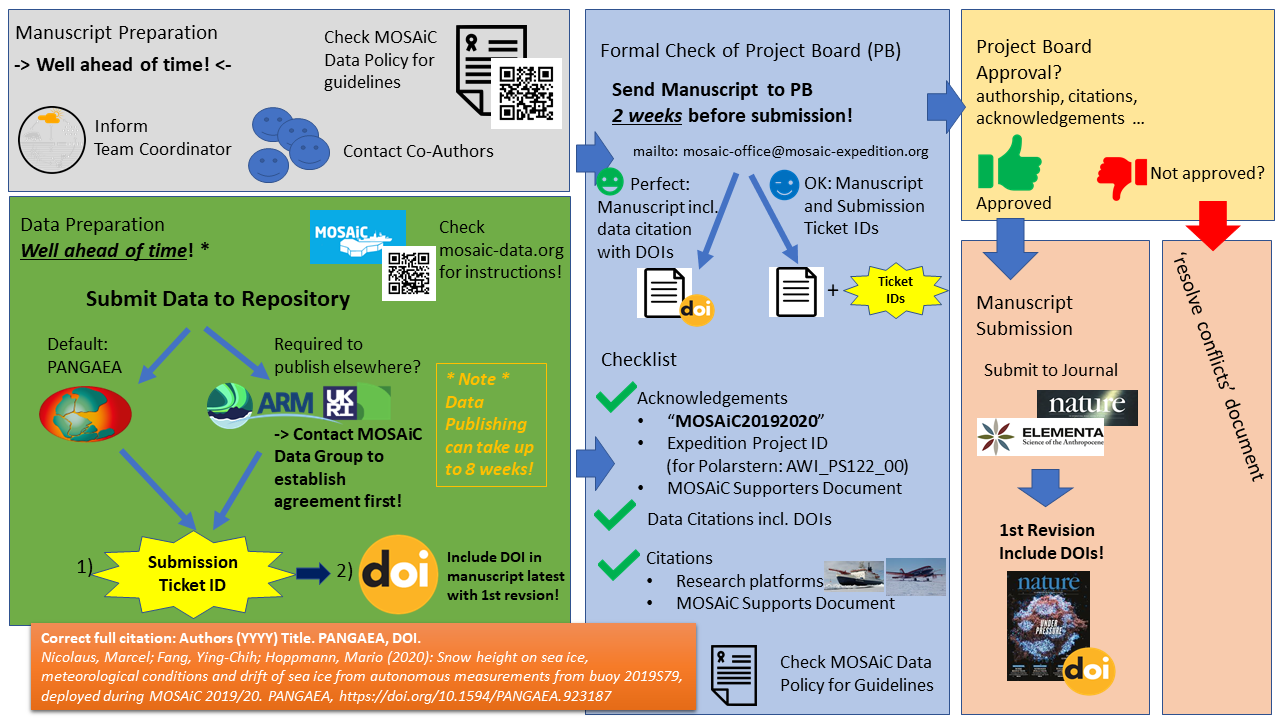Page History
| Table of Contents | ||
|---|---|---|
|
A primary goal for MOSAiC is to advance research into the Arctic climate system, and that research will be documented via scientific publications. It is essential to establish a clear and transparent publication process that is consistent with the MOSAiC Data Policy Policy and encourages broad participation. To enable this process, this document outlines the expected pathway for developing MOSAiC publications as well as providing information on a MOSAiC Special Feature in the journal Elementa where MOSAiC submissions are encouraged.
Figure 1: Recommended MOSAiC manuscript preparation flow chart.
...
- Inform your team coordinator so they have an overview of team activities, can support cooperation and collaboration, and can help ensure that your manuscript follows expected protocols.
- Data Use. Ensure that data use is consistent with the MOSAiC Data Policy, including interacting directly with the official data provider / PI for any data used.
- Consider details of authorship and/or acknowledgement consistent with the MOSAiC Data Policy (Section 9). An inclusive authorship approach is encouraged. Broadly accepted authorship standards are documented at: http://www.icmje.org/recommendations/browse/roles-and-responsibilities/defining-the-role-of-authors-and-contributors.html. Team leaders can help resolve authorship issues that arise.
- Data Archival. Consider details of data submission, archival, and DOIs. Before a manuscript can be published, most journals require that the data used must itself be published in a public data repository and have a specific DOI. MOSAiC encourages this public release and documentation of data to support proper data acknowledgement and citation. This process can take up to 8 weeks, so plan accordingly (see Data Publishing below).
- Two weeks prior to submission, send the manuscript to anja.sommerfeld@awi.de. mosaic-office@mosaic-expedition.org. The MOSAiC Project Board will perform a formal check to ensure adherence to the MOSAiC Data Policy, including authorship, citation of research platforms, and correct acknowledgement. They will NOT evaluate the manuscripts scientific content. You will be informed of any concerns.
...
- The MOSAiC Project Board recommends that data used in manuscripts be publicly archived prior to the manuscript’s final publication, consistent with most journal policies.
- Submit the data used in the manuscript to PANGAEA or an alternate repository:
- For PANGAEA use http://www.pangaea.de/submit and receive a PANGAEA submission ticket-ID.
- If you are expected to publish data in an alternative repository due to funding requirements: Contact the MOSAiC Data Group to establish an Agreement with this alternative repository. Submit data to this repository and receive a submission ticket-ID.
- PANGAEA, or the alternate repository, will manage the data archival process along with the data provider. After approval of submitted data, the data will be assigned a DOI. This DOI should be included in the manuscript’s references and cited where appropriate in the manuscript text.
MOSAiC acknowledgement
The MOSAiC extended acknowledgement has been published and its short reference is: Nixdorf, U. et al. (2021). MOSAiC Extended Acknowledgement. Zenodo. https://doi.org/10.5281/zenodo.5179738 (download as BibTex). We suggest the authors to use the following text in the manuscript acknowledgement:
We thank all those who contributed to MOSAiC and made this endeavour possible (Nixdorf et al. 2021).
Elementa Special Feature
A MOSAiC Special Feature (https://collections.elementascience.org/mosaic) has been established in the journal Elementa (https://online.ucpress.edu/elementa). Broad participation in this Special Feature will help the MOSAiC community to communicate and promote the many connections that cut across the various projects and components of MOSAiC. Elementa covers a broad range of topics, and is appropriate for nearly all MOSAiC research. Some special considerations for this Special Feature include:
...

